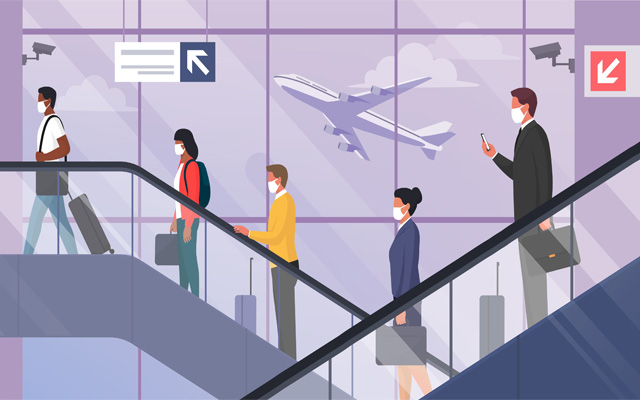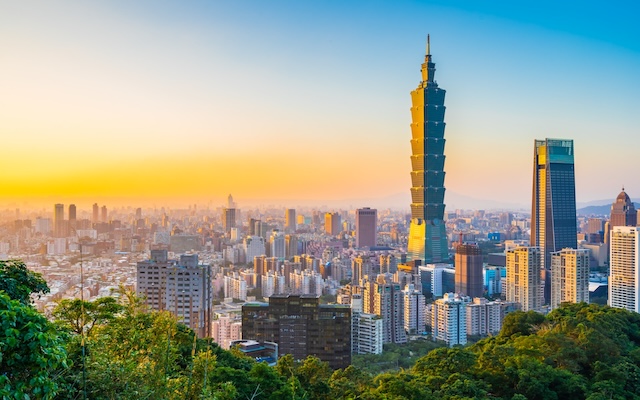Rodger Cook, general manager – global security services for World Travel Protection, believes that with appropriate planning and risk management, corporate travel should be back on the radar this year
Before Omicron, there was a sense that the business travel industry was back on track. It wasn’t just the essential worker who was free to travel; we could all finally have face-to-face meetings after two years and many Australian businesses took advantage of that at the end of 2021.
Two months is a long time during a global pandemic and the arrival of a new Covid-19 strain has seen renewed caution. Some organisations have extended their travel freeze while others have redefined what is essential travel. Many companies are reactive and overly cautious when it comes to putting people back in the air. With some simple contingency plans, companies can support their travelling population.

Whether it’s travelling to Australia for a hit of tennis or to a far-flung destination for that long-overdue business meeting, travel remains complex. At World Travel Protection, we saw a renewed interest in corporate travel towards the end of 2021 with numerous organisations looking to reassess the risk involved and develop mitigation strategies to support their travelling employees and expatriates.
Our knowledge and tools to navigate the pandemic have continued to develop and improve. Governments and insurance companies are also accepting the need for personal mobility, which we’re seeing with borders reopening, loosening restrictions, and many travel insurance policies now include some kind of Covid coverage.
With appropriate planning and risk management, travel should be back on everyone’s radar for 2022.
The next question then, is how? How do we plan when the one thing that is constant is change?
The ‘what ifs’
Contingency planning is a key part of travel risk management – and it’s more relevant than ever with the global pandemic. It’s important before we leave to understand and plan for the ‘what ifs’:
• What if I develop symptoms?
• What if I test positive?
• What if I can’t get a RAT or a PCR test?
• What if I can’t stay at my hotel if I test positive?
• What if I can’t get home when I’m supposed to?
We need to identify and mitigate likely scenarios and understand actions and outcomes required to manage ‘worst-case scenarios’. Having a plan in place beforehand not only fulfils Duty of Care obligations, but it provides reassurance to the travelling employee they will be taken care of by their organisation. Contingency plans protect not only the traveller, but the financial and reputational interests of the company as well.
Fit to fly
For many of our clients’ employees, they are out of practice with the rigmarole of air travel. Some have missed it, while many have enjoyed the downtime and reunification with family and friends. When we travel, we’re confronted with inherent health risks brought about by travelling vast distances, adjustments to routine, changes in diet, extremes in climate etc. Travelling from mostly mild Melbourne to tropical Thailand can be an adjustment, as well as that ski trip to Whistler from Singapore.
Travel “discomfort” is a price we pay until we have acclimatised and our body clock adjusts to local time. When we travel for leisure we rely on adrenaline – the excitement of being somewhere new, the ability to kick back and relax or to recharge our batteries through seeking adventure. When we travel for business, we rarely get a chance to relax and we have a smaller window of opportunity to adjust.
Before asking your staff to fly, ensure they are both physically and mentally prepared for being away from family and braving a world still heavily impacted by Covid. Ensuring someone is fit to fly might be as simple as a conversation or a medical check-up. Are the traveller’s vaccines up to date? Is the traveller’s family okay with them travelling again?
Know your destination
Even if it’s a place you’ve travelled to many times before, it’s different now. No country has been untouched by Covid.
Each country has had a unique journey and the impacts are seen in what we refer to as ‘Covid culture’. The rules – official and socially accepted – are likely different. Should you wear a mask? What kind of greetings are okay? Has there been financial and economic hardship? If so, has that led to an increase in crime or scams that you’ll be targeted for as a traveller?
It’s important to be perceptive to these changes, which will help you to avoid unnecessary risk or offence.
Travel safe
Whether it’s the scholastic clients looking to restart their travel programmes or mining companies looking to a return of ‘business as usual’, travel will come back.
While we are better prepared than we were two years ago, the pandemic is still affecting travel. Be prepared with plans that support your travelling population, backup plans should the situation change, and manage the ‘what ifs’.
Approach travel like a new traveller and not the seasoned traveller you were before the pandemic; don’t be blasé about travel risks and don’t assume your destination is exactly how you left it. Take the time to research how your destination might have changed in the past two years.
Now, more than ever, get your paperwork right, source accurate information on travel requirements and be prepared to adjust if needed.
While travelling is complex and it seems that it might be all too hard, those companies that are risk-aware, well informed and prepared should take advantage of open borders and opportunities.






















